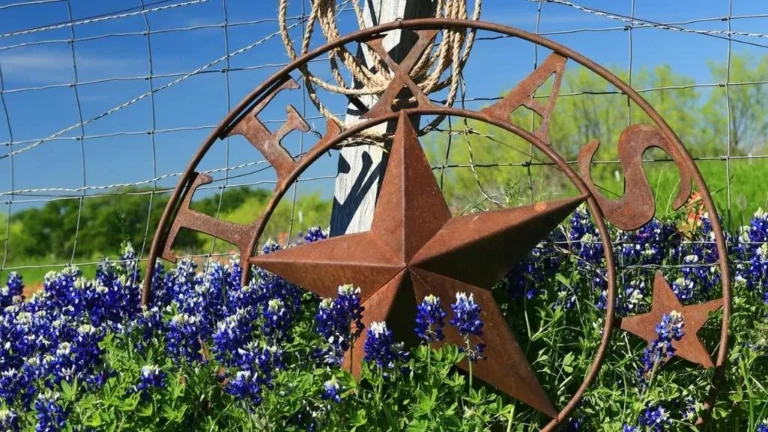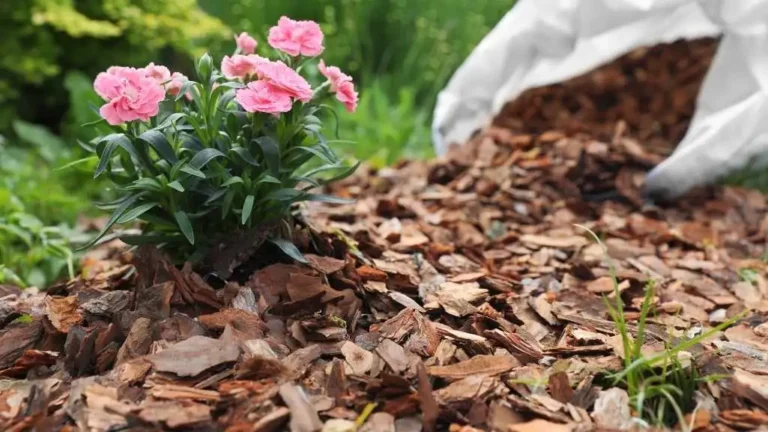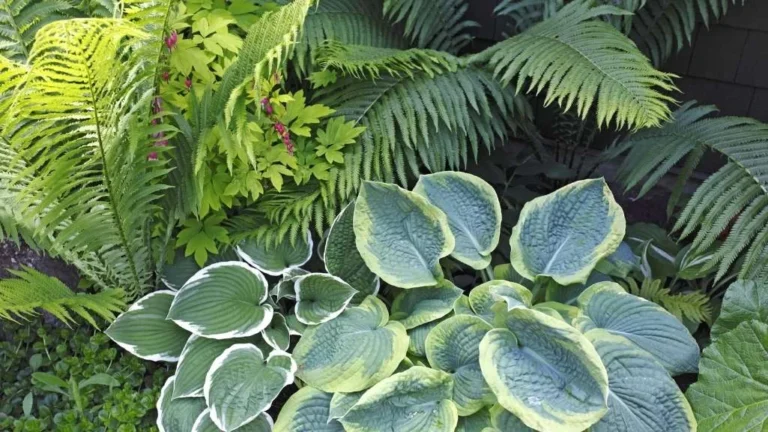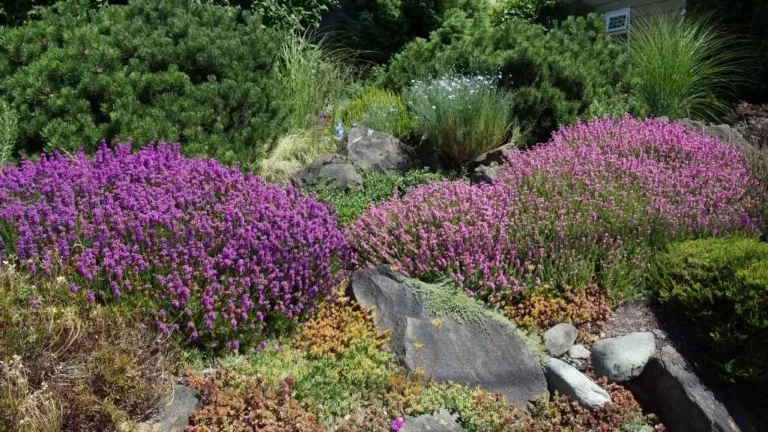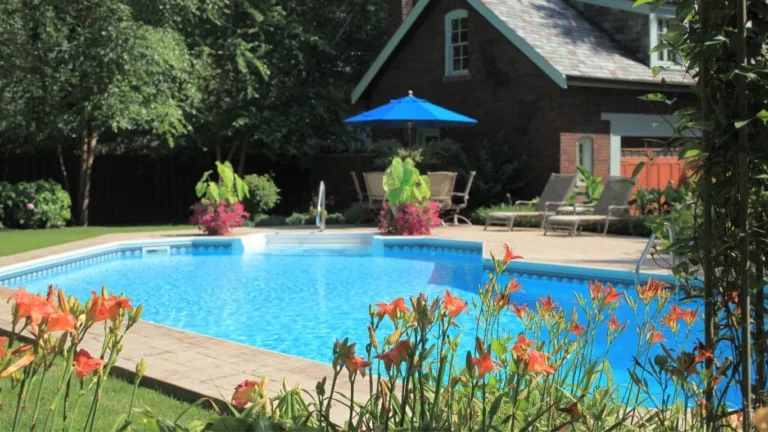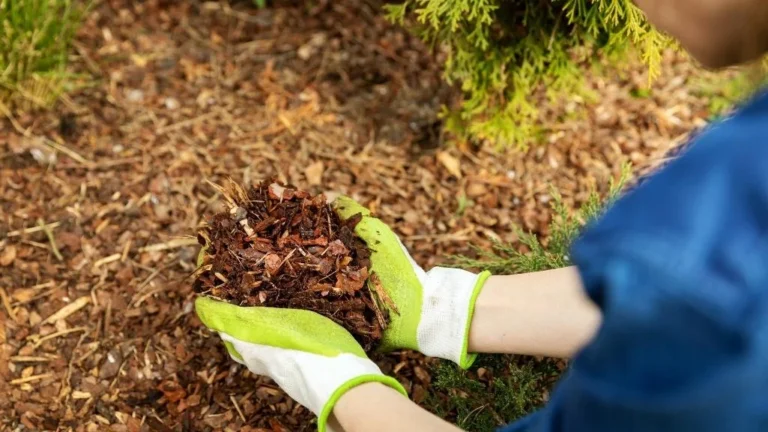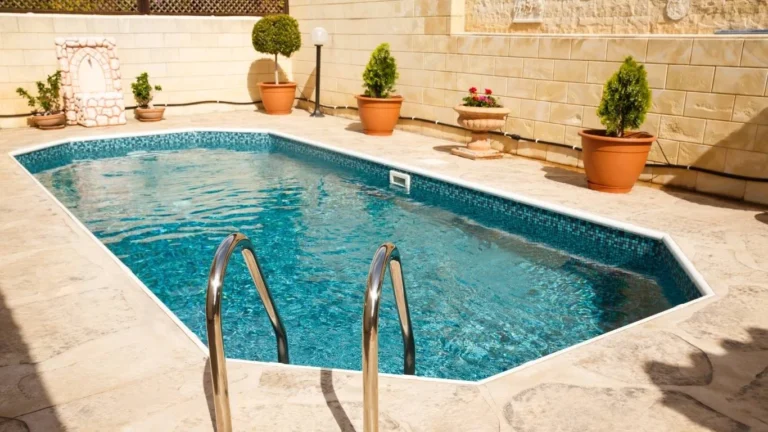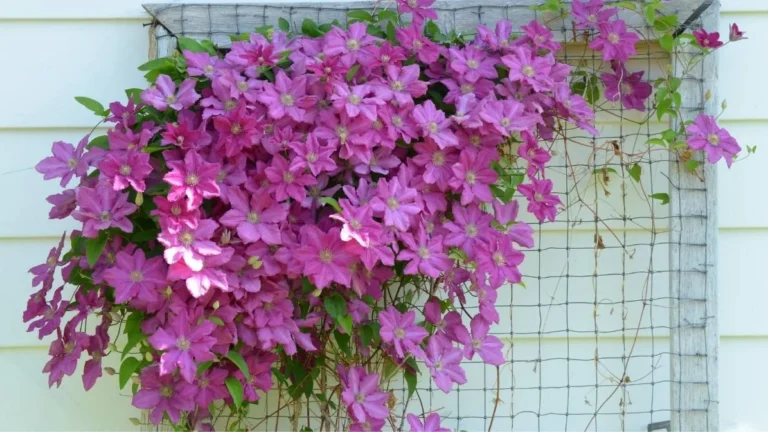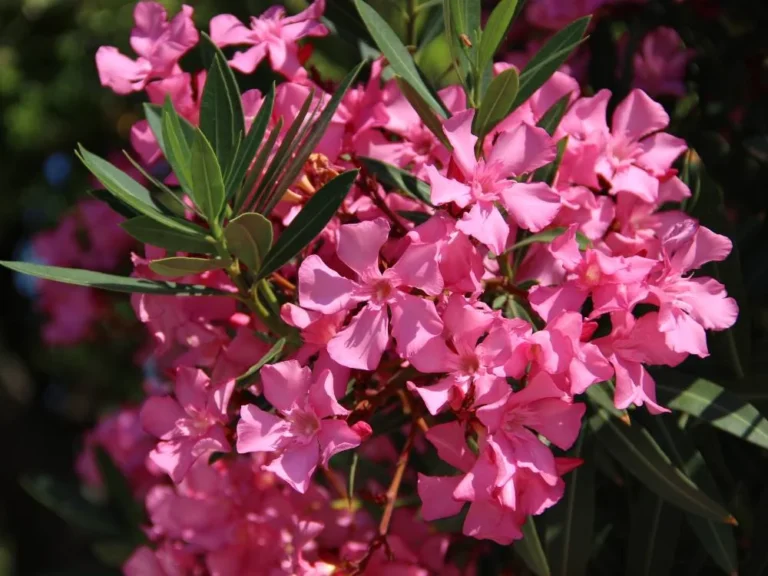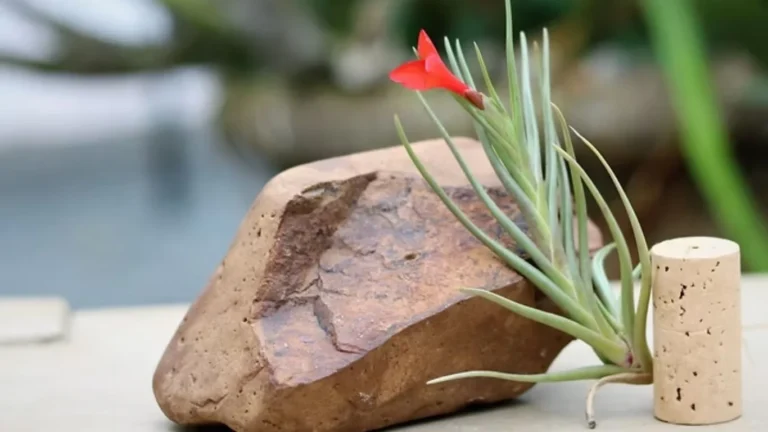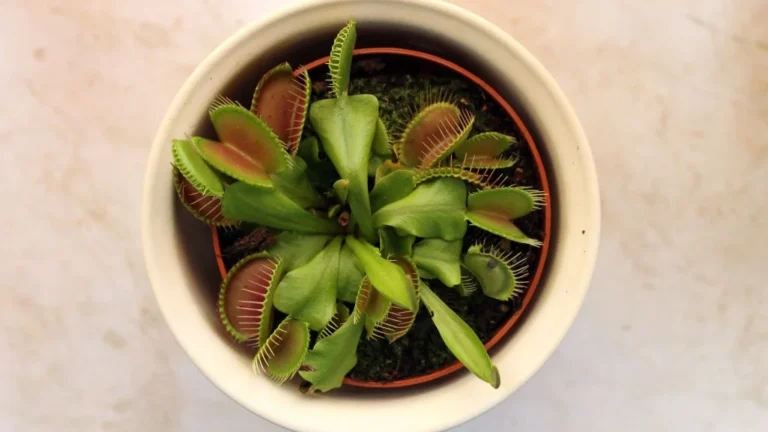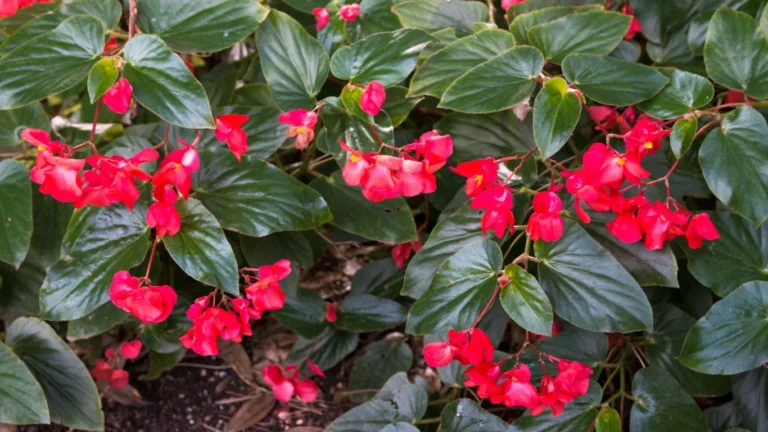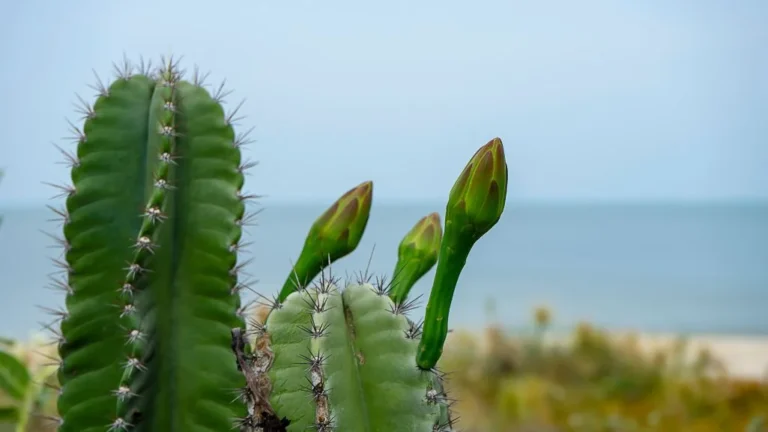Dracaena, At a Glance
|
Scientific name |
Dracaena |
|
Family |
Asparagaceae |
|
Native |
Africa, southern Asia, and tropical Central America |
|
Hardiness Zone |
USDA Zones 10 to 12 |
|
Plant Type |
Shrub |
|
Bloom |
Rarely |
Caution: Dracaena plant is toxic to pets.
How Dracaena Looks
Leaves
Dracaena plants typically have long, sword-shaped leaves that emerge from a central stem. The leaves can be solid green or may feature variegation, with stripes or spots of different colours, such as white, yellow, or red. The leaf size, shape, and coloration vary according to species and cultivars.
Stems
The stems of Dracaena plants can range from thin and flexible to thick and woody, depending on the species. Some Dracaena species have a single main stem, while others may have multiple stems, creating a bushy or clumping growth habit.
Height
Dracaena’s height and growth rate vary according to their species. In some cases, Dracaena can grow from a few feet to several feet tall or even taller.
Types of Dracaena
Dracaena has about 120 species, most of which are rare. Some commonly seen dracaenas are Dracaena marginata (dragon tree), Dracaena fragrans (corn plant), Dracaena reflexa (Song of India or Pleomele), Dracaena sanderiana (lucky bamboo), Dracaena deremensis (including cultivars like ‘Janet Craig,’ ‘Warneckii,’ and ‘Lemon Lime’), Dracaena massangeana (corn plant or mass cane), and Dracaena godseffiana (gold dust dracaena).
Dracaena’s Requirement
Requirements for dracaena at a glance
Elements | Requirement |
Sunlight | Low to bright indirect sunlight |
Temperature | 60°F to 80°F |
Humidity | 40-60% |
Soil pH | 6.0-7.0 |
Soil mixture | Well drained |
Container | Container with drainage hole |
Water | When the top layer of the soil dries out |
Fertilizer | Once a month during summer and spring |
Note: The soil pH level indicates how acidic or neutral the soil is. On a scale of 1 to 10, with 7 indicating neutrality, a pH value less than 7 indicates acidity, while a value greater than 7 indicates alkalinity. Dracaena plants require slight acidity to neutralize soil pH.
Mix the Soil Properly
Dracaena plants require a well-draining soil mixture to prevent waterlogging. Dracaena plants don’t like their roots to sit in water for too long because it can make them sick and even kill them. The soil mix for Dracaena includes the following components in equal amounts.
- Normal gardening soil,
- Pumice or perlite for good drainage and aeration, and
- Peat moss or coco-peat holds moisture and improves drainage.
Soil mixtures made explicitly for cacti and succulents can also be used for this plant, as the cactus mix has a good drainage system.
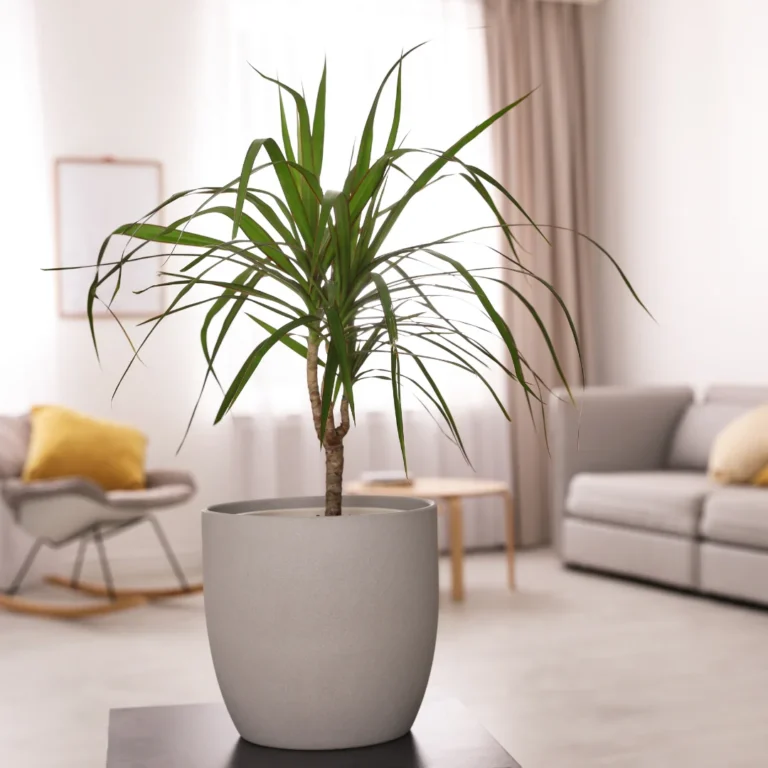

Choose the Right Container
Dracaena plants have shallow and fibrous roots that grow horizontally rather than going more profoundly in the soil. So, when choosing a container for Dracaena, consider the following factors.
- The size of the container/pot should be 2 to 3 inches bigger than the current pot size. As the roots are shallow, it only requires a little deep pot. However, they do appreciate wider pots to accommodate their spreading root system.
- The plant requires a good drainage system, so the container must have drainage holes under it.
- Materials like ceramic, plastic, or terracotta work well for dracaena plants. Remember that plastic containers retain more moisture than ceramic or terracotta containers, which impacts the plant’s watering requirement.
How Much Sunlight Dracaena Needs
Dracaena plants can survive in all kinds of lighting conditions. But the plant thrives in bright light. To keep the beautiful color of dracaena intact, place it where it gets morning direct sunlight and indirect light throughout the day. Dracaena can also grow in low light conditions, but the plant’s growth goes down. Avoid keeping the plant beside the window during cold drafts.
When & How to Water
Dracaena requires slightly moist soil. However, overwatering can easily kill this plant. So it’s better to underwater than overwatering.
- Water the plant when the top layer of the soil dries out. Do a finger dip test or use a moisture meter to check the soil’s moisture level.
- Dracaena is sensitive to fluoride and chlorine, so make sure the tap water used for watering the plant does not contain fluoride and chlorine. In that case, use room-temperature rain, filtered, or distilled water.
- While watering, make sure every layer of soil absorbs water. Keep watering until water starts flowing out of the drainage holes at the bottom of the pot.
- Ensure the plant does not stand on water for a long time. Empty the saucer under the pot after every watering session.
Fertilizer for Dracaena
The fertilizer requirement for the dracaena plant is similar to that of other houseplants. Feed the plant with a nitrogen-based water-soluble fertilizer once a month during its growing period. Avoid putting fertilizer during winter.
When & How to Repot
Re-pot the Dracaena plant when its roots are visibly circling the pot, growth slows, or water isn’t absorbed well. Usually, the dracaena plant needs re-potting every 1.5-2 years.
- Select a new pot with drainage holes under it that is 2 to 3 inches larger than the current pot.
- Water the plant the day before repotting to soften the soil, making it easier to remove from the container.
- Remove the plant from its current pot by carefully loosening the roots and soil around the edges.
- Check the roots for any rot or diseases. Cut off any brown/mushy/smelly roots.
- Finally, place the pot in the new container with the new potting mix.
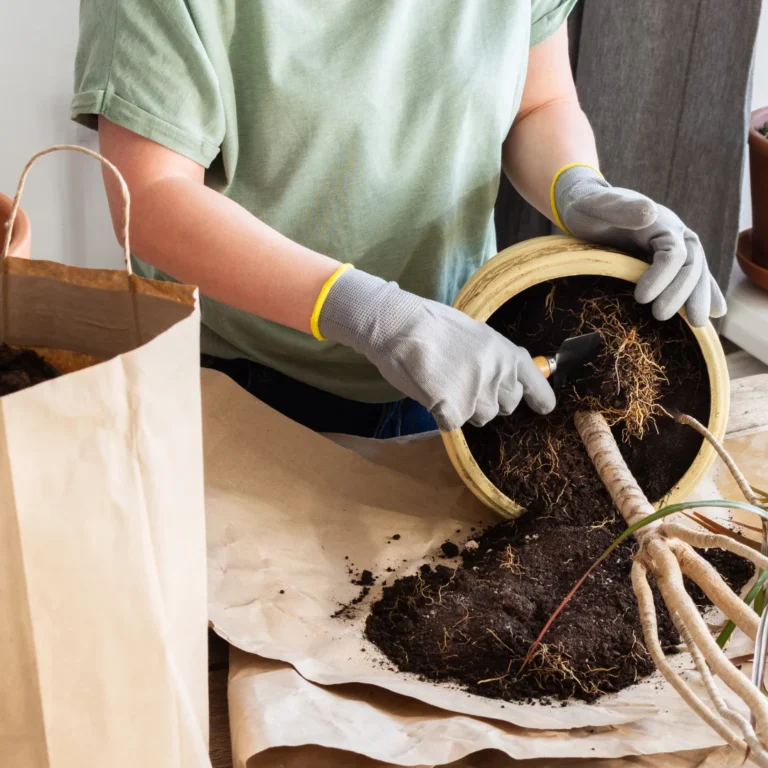
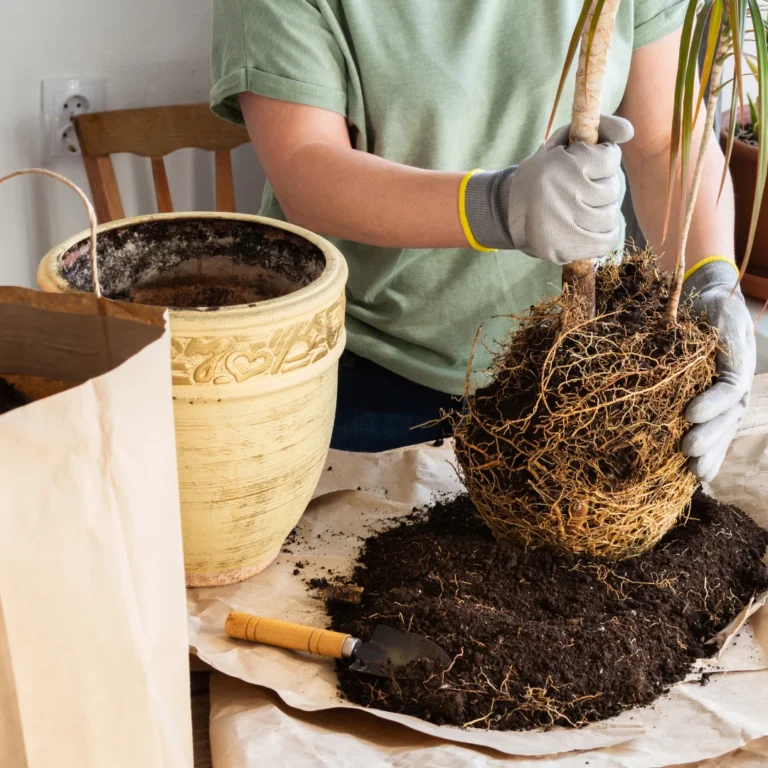
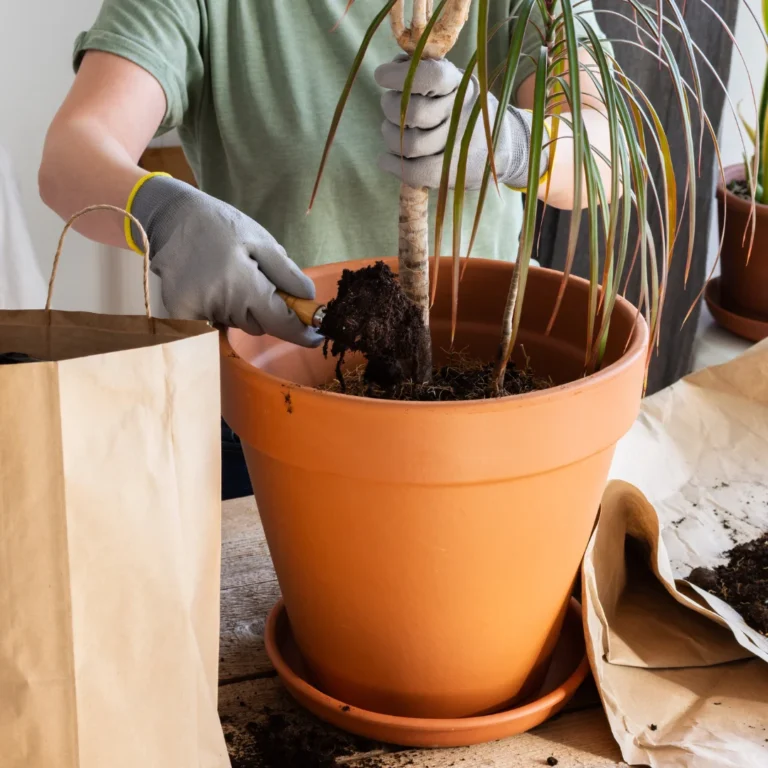
Prune to Thrive Dracaena
Dracaena plant requires pruning to remove dead or diseased leaves or get a cutting for propagation. Summer and spring are the best time for pruning as these seasons are growing periods. Use a sharp, sterilized blade or scissors for pruning. Make sure to make a clean cut. Don’t make uneven cuts or try to tear off the leaf. This may damage the plant, and from that, cutting propagation is not possible.
Protect Dracaena from Pests
Pests like spider mites, mealy bugs, scale insects, and aphids can attack the dracaena plant. Check the plant’s leaves and stems for any signs of infestation, including webbing, sticky residue, or tiny moving insects on the leaves and stems. If pests are present, the plant should be treated with insecticidal soap or neem oil according to instructions. Regular inspection and maintenance are crucial for preventing pest issues and ensuring the plant’s health.
Dealing with Other Common Issues
- Tips getting brown and yellow indicate that the water provided to the plant contains fluoride. In that case, use rainwater or filtered or distilled water.
- A crispy brown tip is a sign of low humidity. In that case, add a humidifier or mist the plant leaves.
- Leaves edges and tips are turning brown or black, a sign of overwatering. In that case, let the top layer of the soil dry before watering. Leaf yellowing is also a sign of overwatering.
- Droopy leaves are a sign of under-watering.
Propagation Process of Dracaena
Dracaena can be propagated by stem cutting or from seeds. The stem-cutting process is more convenient and widely used. Propagation from seed is a rare process as this plant blooms rarely. The propagation process from stem cutting is as follows.
- Firstly, choose a healthy stem from the mother plant, which has several nodes (place from where leaves emerge from the stem) on it.
- Cut the selected portion with a sterilized sharp knife 4-6 inches long.
- Remove the lower leaves from the cutting, leaving a few leaves at the top intact.
- Dip the cut end of the stem in the rooting hormone. This step is optional but can speed up the rooting process.
- Place the stem into a new pot filled with well-draining potting mix.
- Water the soil thoroughly to settle it around the cutting. Keep the soil consistently moist but not waterlogged.
- The stem can also be placed in water for propagation.
- Place the pot in a stable, warm environment with enough indirect bright light throughout the day.
- Rooting can take several weeks to a few months. Be patient and monitor the cutting regularly for signs of new growth.
- Once the cutting has developed a healthy root system, it can be transplanted into a larger pot with regular potting soil.
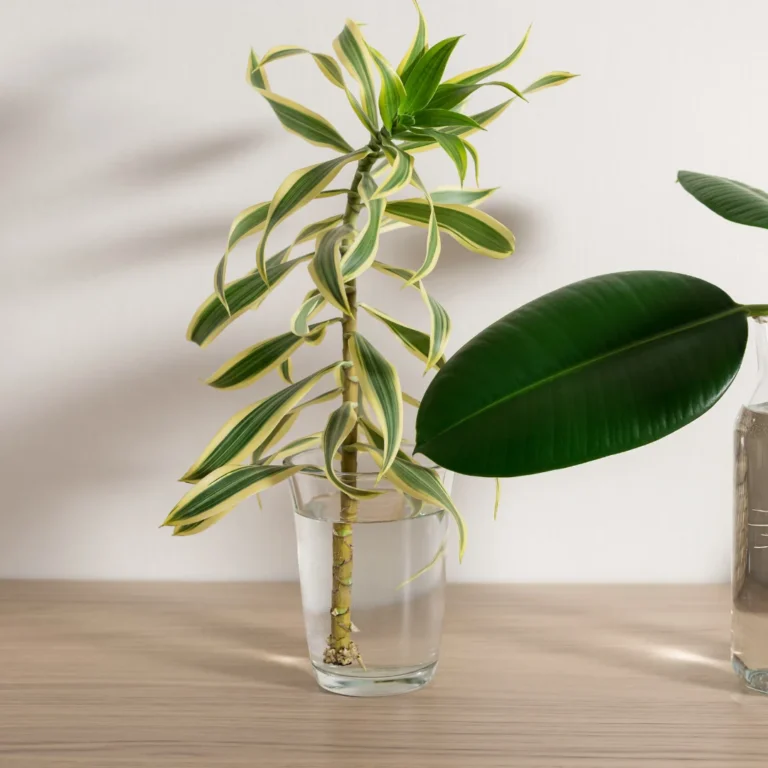
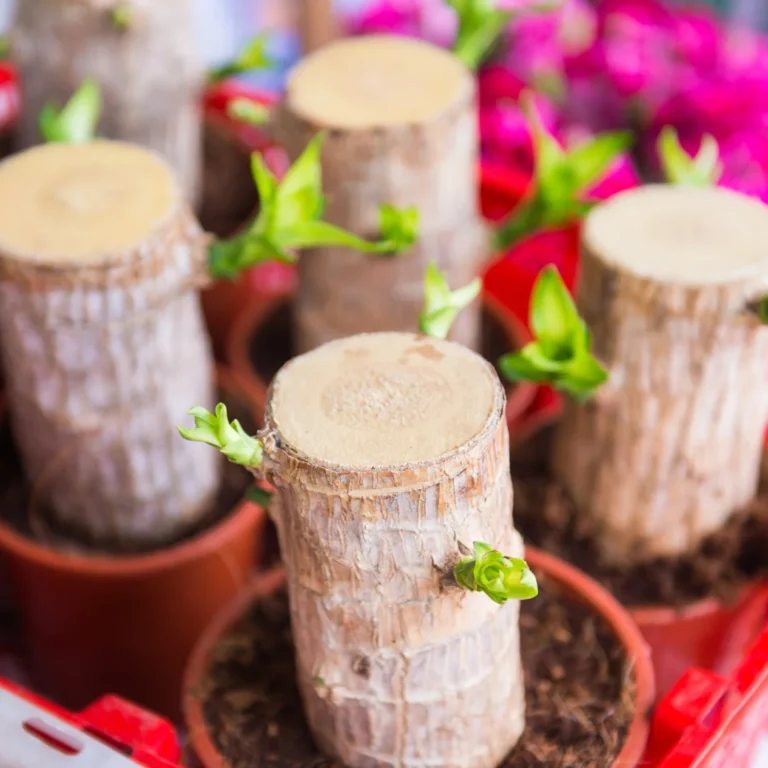
Tips for Dracaena
- Position the plant in a spot where it won’t frequently brush against other plants or people.
- Mist the plant’s leaves regularly.
- Use rainwater for watering dracaena.


